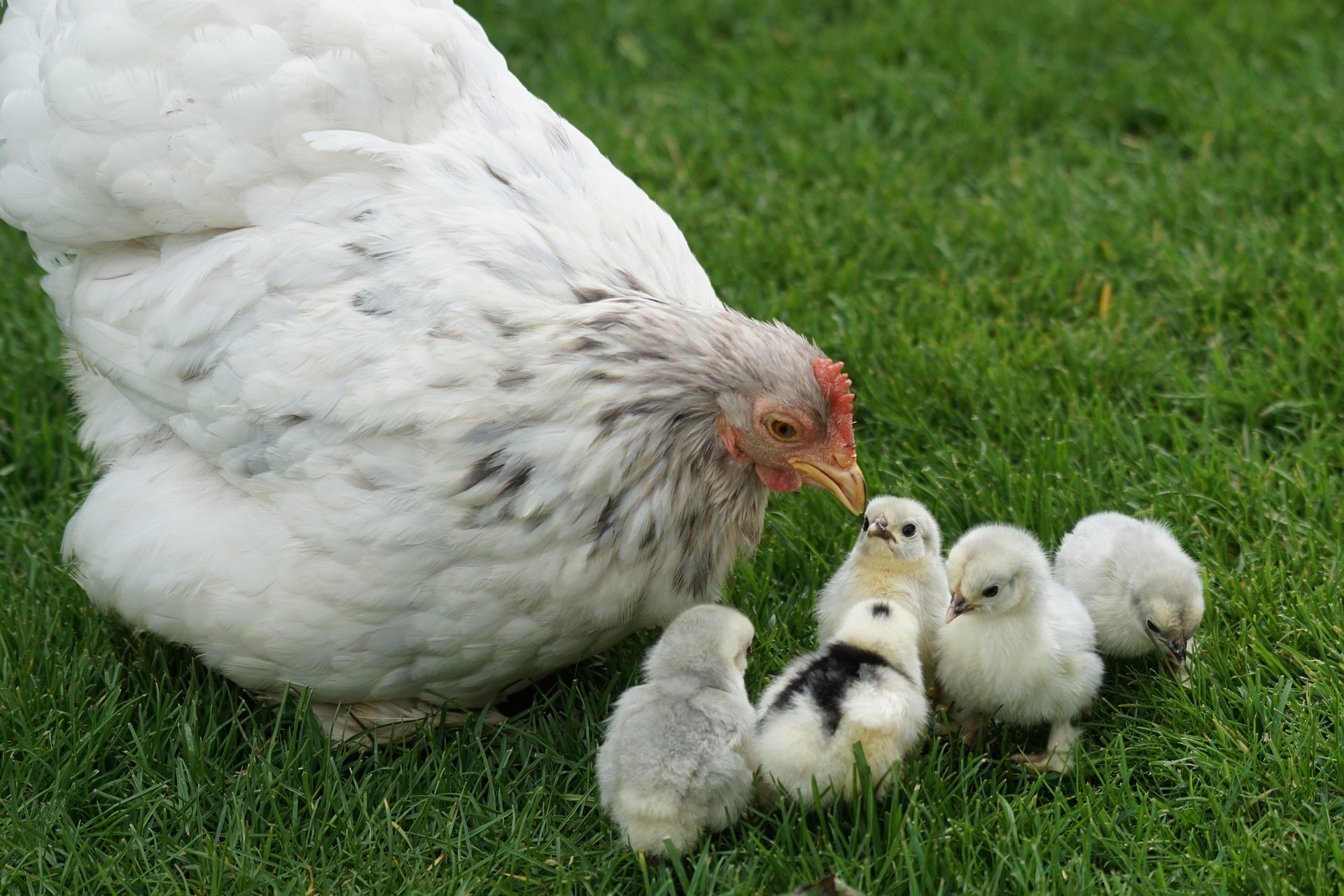The first 18 weeks of a chick’s life is the most critical and will impact future production. Errors made during this time are difficult to overcome. During pullet development, their body is focusing on growing and building reserves for future laying. Low egg production and poor shell quality during lay can often be traced back to pullet development. Pullet management is essential for the success and profits of the future laying flock. The overall aim of pullet development is to reach a target body weight with high uniformity. Less than 85% uniformity will cause a decrease in egg production and peak production will be hard to maintain. Understanding developmental stages, maintaining brooder temperature, providing enough space, and providing fresh, balanced rations will help ensure the success of your future layer.
Understanding the different stages of development will help pinpoint when your hen had issues in her early life. Interrupted growth during any of these developmental phases will result in hens lacking the body reserves and organ function to sustain high production as adult layers.
• Week 0-6: The organs of the digestive tract and immune system are developing. Stress at this age can have a lifelong impact on the digestion of feed and the absorption of nutrients.
• Week 6-12: This is the period of rapid growth and when the pullet is building most of her adult structural components (muscle, bones, and feathers).
• Week 12-18: Growth is beginning to slow while the reproductive tract matures and prepares for egg production. The skeleton is 95% developed by the end of the 13th week of life, and at this time, the skeleton size will not increase. Muscles continue to develop and fat cells begin to proliferate in preparation for sexual maturity. You want to avoid excessive body weight gain at this period because it can result in an excessive fat pad. Low bodyweight and stress can delay the onset of egg production.
Regulating brooder temperature is critical because a chick’s body is not able to regulate its own temperature until day 14. Brooder temperature should be 95°F at chick level on day 1, then decreased by about 1°F daily, until reaching 75°F (or ambient temperatures) at 3 weeks. Chicks lose much of their body temperature through the skin of their legs, so feeling their legs will help gauge internal body temperature of the chick.
Providing enough feeder and waterer space allows for pullets to eat and drink with enough space and will help flock uniformity. A general rule of thumb for linear feeder and waterer space is 1 inch per chick, and increase to 2 inches per bird by week 2. After week 8, give 3-4 inches per growing pullet. Also, extra feed space is needed for the first week. Adding 1 feeder tray per 50 chicks in addition to their normal feeders. Do not allow trays to get empty (this will place great stress on birds and can reduce yolk sac absorption). Trays can be completely removed by 7-10 days. A lack of uniformity is likely a result of lack of feeder and waterer space.
Floor space is also important for development. Having adequate living space will help social development, decrease pecking, and increase comfort and performance. Giving 0.5 sq. ft.per chick and increasing to 1 sq ft per chick at 3 weeks is required. From week 4 to week 17, 1.5 sq ft per pullet is needed. This helps to spread out manure load and helps improve air quality.
Meeting nutrient requirements through a well-balanced, fresh feed is important for the health and development of pullets. The feed being fed, needs to align with the birds age and stage of development. Feeding a fresh, well-balanced chick starter, chick grower, and pullet developer will improve the health and growth for proper development.
Chick Starter: Most critical feed for any poultry. The very specific nutrient levels will establish the future of the chicken’s productivity. The chick starter should be used from day one through ¼ of the development period. This time may vary based on each breed’s genetic potential.
Chick Grower: Grower is lower in protein and energy to accommodate the increased amount of feed consumed. Chick grower is designed to ensure against the development of excess fat or rapid rate of gain. During this period of development, we want to allow the metabolism to stabilize with body size. Chick grower should be fed for the second quarter of the chicken development period.
Pullet Developer: Pullet developer is specifically designed for the correct development of replacement layers. This feed will minimize the amount of internal and external fat deposits that may lead to poor egg lay and poor fertility. This formula should be fed the third quarter of the bird’s life. This should be fed from weeks 12-18 with high production birds.
A final, and equally as important management factor is providing fresh, clean water. Watering devices need to be clean and free from bacteria and algae. Water should be cool and no hotter than the pullets body temperature. Water regulates feed intake, so if they aren’t drinking, they aren’t eating. In summary, understanding developmental stages, maintaining brooder temperature, providing enough space, and providing fresh, balanced rations helps prepare pullets for best performance as a layer. Observation is also key to success. Taking the time to watch pullets will help catch issues sooner. Walking the flock will help you spot minor problems before they become major problems, helps socialization, and improves nesting behaviors in layers. Overall, good pullet management will result in high performing, healthy layers.
Have questions about raising your pullets? Comment them below!
